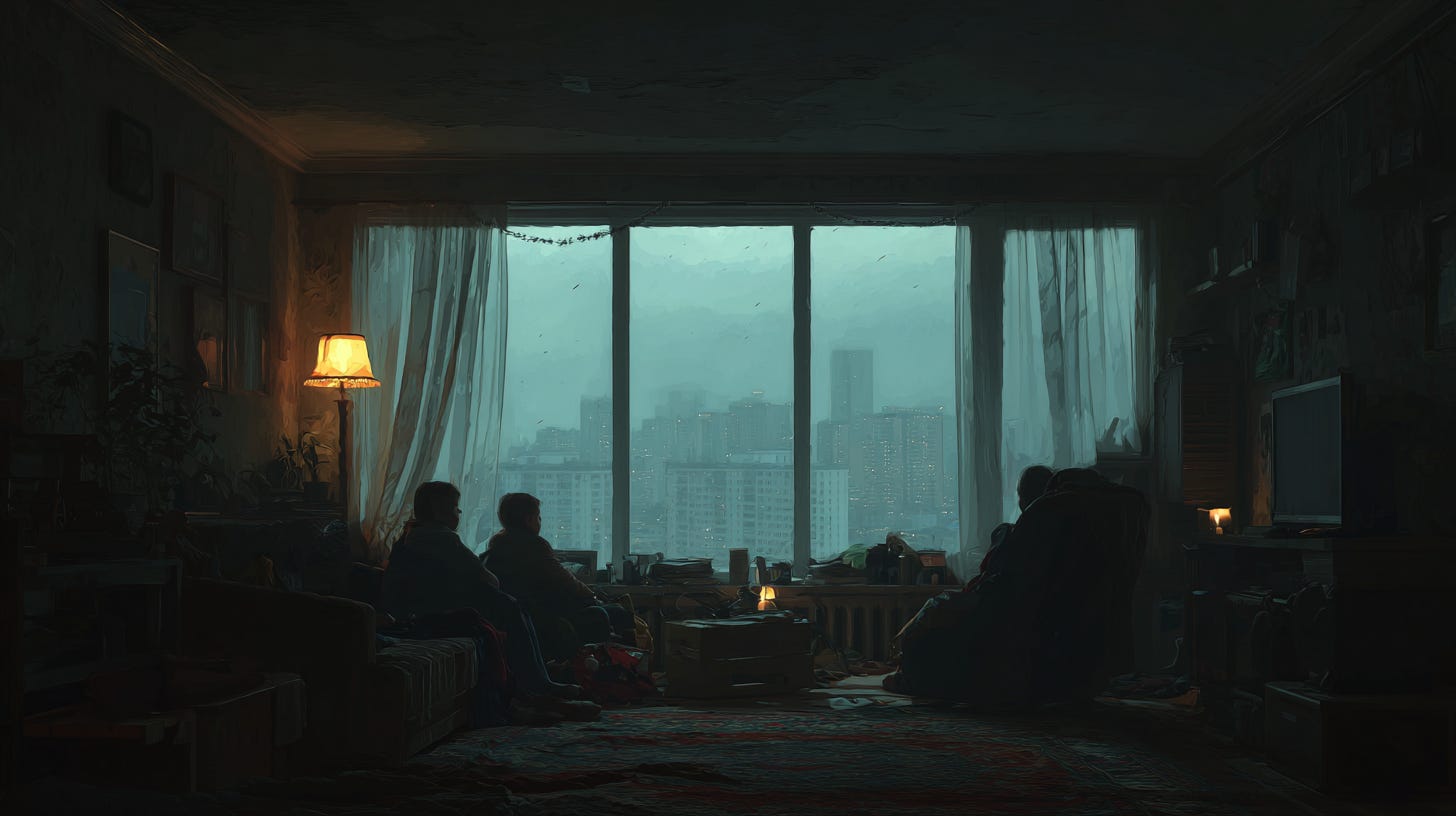Shelter: Holding Space When the Lights Go Out
Your home can be your greatest defense — or your greatest vulnerability — when systems fail.
When most people hear “shelter” in preparedness, they think of wilderness survival: tents, tarps, or caves.
But for urban and suburban families, the reality is very different.
Your apartment, townhouse, or home is your shelter.
And keeping it safe, livable, and secure during a collapse is one of the most important parts of preparedness.
Lessons From History
In every conflict, shelter has been targeted.
During the American Revolution, homes were torched to cut off supplies.
In the Balkan war, people barricaded apartments, lived without power for months, and feared every knock at the door.
What history shows us is clear: shelter isn’t just a roof. It’s about safety, warmth, privacy, and security.
Bug In or Bug Out?
One of the biggest questions in preparedness is: Do you stay put, or do you leave?
Bugging in means defending and sustaining yourself where you are. For most urban dwellers, this is the default and often safest choice.
Bugging out means leaving for a safer location. This requires a plan, supplies, and a destination — not just the fantasy of “heading to the woods.”
Your shelter plan needs to account for both.
Most crises start with bugging in, and only escalate to bugging out if things become truly unsafe.
👉 For a deeper dive into bugging in strategies specifically for city dwellers, I recommend Urban Bug-In Survival Bible by Mike Sedgefield.
It’s a practical guide to turning your apartment or home into a sustainable refuge when leaving isn’t an option.
Hardening the Home
If you’re staying put, your goal is to make your shelter secure and sustainable without drawing attention.
Light discipline: Cover windows with blackout curtains or heavy blankets. Don’t advertise that you have power or supplies.
Security layers: Strong locks, reinforced doors, simple alarms, even noise deterrents.
Temperature control:
In winter: safe indoor heaters, layered clothing, insulation hacks (seal off rooms, hang blankets).
In summer: fans, ventilation, shade, and hydration.
Privacy: Protect not only your supplies but also your routines from being visible.
Alternate Shelter Options
Even the best home may not be safe in every scenario. Think ahead:
Friends or family who can host you.
Community safehouses or mutual aid networks.
Short-term relocations if violence or danger escalates nearby.
Have multiple options mapped out before you need them.
Practical Tips for Pathfinders
Start with what you have. Small changes like better locks, blackout curtains, or a Doorricade go a long way.
Know your exits. Map routes not just out of your home, but out of your neighborhood. If you’re a AAA member, you can get free paper maps of many areas.
Stock for sheltering in place. Food, water, lighting, and sanitation all tie back into your shelter plan.
Practice power outages. Spend a night without electricity and see what gaps you discover.
Stay discreet. The less people know about your supplies, the safer you are.
Skills, Not Just Stuff
Gear helps, but skills sustain. Learn how to insulate a room with blankets, cook indoors safely, and manage waste without running water. These skills turn four walls into a true refuge.
Coming Next
In the next post, we’ll talk about Food — how to build a resilient supply beyond the empty shelves.
Subscribe and Stay Ready
This series is part of Urban Preparedness in Uncertain Times. Each post builds on the last to help you create a clear, practical plan for your family’s survival.
👉 Subscribe to Pathfinder Chronicles today and don’t miss the next post: Food.



